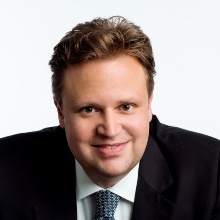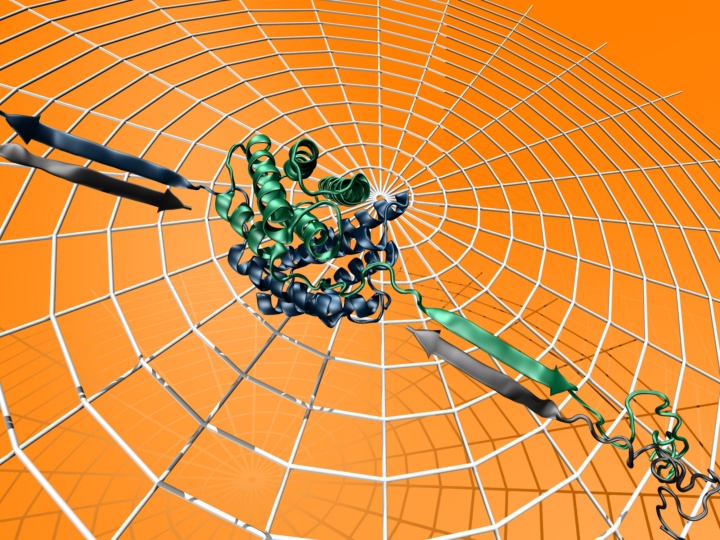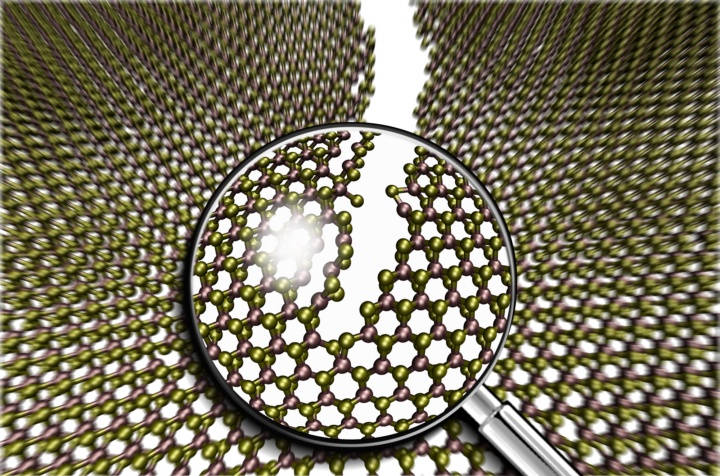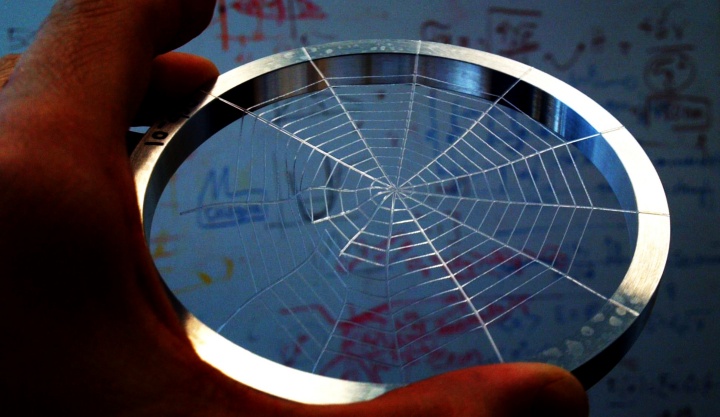The materials scientist Markus Buehler is the Dean of the Civil and Environmental Engineering Faculty at the world famous Massachusetts Institute of Technology (MIT) where he is the current holder of the prestigious McAfee Professorship. In this interview, the alumnus of the University of Stuttgart talks about his research – and points out the importance to science of transcending the boundaries of status, institutions or cultures.
Interview
Professor Buehler, your research is associated with catch phrases such as “nanotechnology “bordering on biology”, “cobweb-like proteins” and “renewable steel”. What’s behind all of that?
Our central mission is the discovery and fabrication of new materials, whereby the overriding objective at the MIT is to make nanotechnology useful in everyday life and especially for materials and products that can be manufactured in large quantities. Computer simulation plays an important role in this context. This work enables us to virtually optimise a novel material atom-by-atom on the computer before actually creating it in the laboratory later. Ultimately, this is the core vision of the physicist Richard Feynman in the 1950s, which was to be able to write the entire contents of the Encyclopædia Britannica on the point of a needle.
Part of that vision was the ability to be able to manipulate materials at the atomic level to create new phenomena. Today, we’re in a position to be able to do that. One of the greatest challenges in this context is to develop models capable of describing all properties from the scale of a single atom to the structure of a given component or product and across all interim stages, so-called mesoscopic scales, which form the bridge between the nano and macroscopic scales.
Much of our research work involves biological materials such as spider web silk and bones. These materials are examples of how nature utilises multi-scale design to achieve specific material properties regardless of the fact that the underlying chemical building blocks aren’t ideal. In this way, for example, ultra hard and durable materials can be produced from the same chemical building blocks and gelatine. Examples of this are the sinews in our bodies, spider silk, which is stronger than steel or certain body parts of marine worms.
What are your next research objectives?
For us engineers, nature is an infinite source of inspiration. But, we don’t just copy nature. Instead, we try to improve on it. Going forward, I can see interesting possibilities for being able to integrate “life” into certain materials, for example based on findings from the field of Synthetic Biology in which biologists, chemists and engineers collaborate to create biological systems that do not occur in nature. For example, we are looking for new strategies to make new products from sustainable materials such as proteins, wood or other renewable materials, which are currently made from petrochemical products in very energy intensive ways. For instance, the production of steel and cement are two of the most CO2-intensive processes on the planet.
The use of new materials could result in a significant reduction in emissions. In my capacity as Head of the Civil and Environmental Engineering Faculty, I invest a lot of time and effort into developing teaching and research strategies. This has resulted in a reorientation of the faculty towards “big engineering”, whereby the integration of multiple disciplines plays a significant role.
You moved to the USA in 2005 when you were still a very young scientist: what are the differences between the research conducted there and in Germany?
During my time at the Max Planck Institute (MPI) for Metals Research, now known as the Max Planck Institute for Intelligent Systems and at the University of Stuttgart I found myself in an excellent environment – that period left a deep impression on me. The best conditions always arise when highly talented people create the prerequisite conditions in which young scientist are able to acquaint themselves with different working methods and perspectives and to achieve excellence. The MPI was always a major centre for materials science. We continuously hosted scientists from all over the world and I was fortunate enough to be mentored by some very special people.
The systems and cultures at the California Institute of Technology (Caltech), where I went as a postdoc after completing my dissertation, and at the MIT where I later settled, are very different. At the Caltech, I found myself in an office in the second basement level that I had to share with other postdocs and students. So, we made sure to hold as many of our meetings as possible in the coffee shop and to enjoy the California sunshine. All together students and scientists worked very closely together there, and collaborated often, irrespective of background or status and across various faculties. Funding, the procurement of third-party funding, was always a major challenge – I learned a lot there. The method of working various ideas into project proposals requires teamwork and usually gets better results.
The MIT is regarded as one of the best technical universities in the world: what do you find particularly fascinating about it?
I have accepted a tenured professorship at the MIT and have built up my own team. I’ve spent a lot of time exchanging ideas with top notch scientists, learning from their experience and then developing my own visions and plans. My greatest pleasure at the MIT was and is the collaboration with excellent students, postdocs and colleagues. It is hugely enriching that we’re such a varied bunch in this community in which we’re working on a shared vision. Without that we wouldn’t succeed!
Interdisciplinary working is very important here. We’re always trying to find and implement new approaches. That can only be achieved if people from various disciplines work hand in hand. We encourage an open door culture at the MIT. So, it’s not important whether someone is a new student or a senior professor; all are equally approachable. It is not rank or past achievements that count here, it’s potential. That was one of the things I loved about the MIT as a young scientist. I was able to implement and refine my own ideas whilst benefiting from colleagues who were already more experienced. Not infrequently, some of the best ideas and most innovative concepts have come from students. If someone has a good idea and is able to convince others of its merits then, as a matter of course, we work collaboratively to see it realised. As an immigrant to the USA I have always been made to feel welcome and have always had the feeling that all options are open to me. On the other hand, taking personal responsibility is deeply embedded in American culture, even in universities.
What can the German system of science learn from its American counterpart?
I think that an important aspect of a successful research and teaching operation are the people, who work to achieve their goals with passion and enormous commitment – both as part of a team and across disciplinary boundaries. On the other hand, American universities could learn from the German system, for example, in terms of collaboration with industrial partners, which is particularly outstanding at the University of Stuttgart.
The USA is in the throes of a political upheaval which is also affecting universities. A so-called “March for Science” was held in April, which also involved the active engagement of German scientists. How is the change affecting you?
There are changes in the wake of every administration change, especially when it involves a complete change of course. I think it’s important for all sides to communicate frankly with one another and to find new ways to bring about positive developments. Germany, for example, could contribute to creating a greater role for production in the USA – and, of course, the University Stuttgart plays a leading role in that. The interest in the German model of education and training also presents an opportunity for dialogue. We must not permit the dialogue to breakdown. We need to find and resurrect common ground. I am certain that the transatlantic link will remain strong and will continue to be the basis of many new developments.
The MIT stands for a culture of excellence, a value, that practitioners in the German sciences are striving to achieve within the “Strategy of Excellence” initiative. Do you consider this initiative to be an appropriate strategy for increasing Germany’s competitiveness as an international research location?
Yes, I think the “Strategy of Excellence” is very good. Of course long-term funding will need to be secured and the focus needs to be on the retention of the most talented researchers. In the USA, the recruitment of top professors is done in almost the same way as the recruitment of football stars in German, including transfer negotiations and retention bonus offers. These days, the best minds in science are “traded” throughout the world. It is important for Germany to keep pace with this development and to attract the best people.
A culture is needed that makes it possible to bring people together whose perspectives may differ greatly but who can collaborate on achieving a shared goal.
Markus J. Buehler, Dean of the Civil and Environmental Engineering Faculty at the MIT
It is important to ask oneself what the fundamental elements of excellence actually are. In the final analysis, it’s all about the people who breathe life into the concept. That’s why a culture is needed that makes it possible to bring people together whose perspectives may differ greatly but who can collaborate on achieving a shared goal. Diversity is an important aspect in this context, because one can really build something special with people from different backgrounds. That is one of the MIT’s explicit objectives. Another area of focus is “impact”. The linking of the findings of pure science with the goal of channelling them into products that are useful to society as a whole. This spectrum from pure science to practical applications that benefit millions of people is the MIT’s premier objective, rather than simply carrying out science and developing theories for their own sakes.
The provision of support for up and coming scientists is another of the MIT’s primary objective and is also at the centre of the MISTI programme of which you are the scientific director: What are the objectives of the programme?
MISTI steht für „MIT International Science and Technology Initiatives“. Es wurde, wie so viele neue Projekte am MIT, als kleines Experiment geboren, das einige Professoren mit Japan unternommen hatten. Das Programm ist ein gutes MISTI stands for “MIT International Science and Technology Initiatives”. Like so many new projects at the MIT, it began as a small experiment that a few professors carried out with Japan. The programme is a good example of how new initiatives arise at the MIT – not so much in the minds of the administrators, but more at the grass-roots level. The idea included a strong cultural component. The goal of the Japanese project was to provide students with an opportunity to spend time living in a foreign country, experiencing foreign cultures and, in particular, to learn about how they do research and how innovations come about there. The majority of our students learn the language of their host countries and take courses on the respective cultures and undertake intensive preparations for the work they will be performing before leaving the MIT.
This model is so successful that it has now been extended to many other countries, including Germany. There are currently over 25 programmes in operation with countries throughout the world. Almost 1000 of our students travel abroad every year and we have in excess of 450 partnerships with institutions, regions and countries. This year we’re celebrating the 20th anniversary with MIT Germany. We’re sending around 70 to 80 students to Germany under various programmes which include internships, research or secondary school teaching. One example is the Global Teaching Labs Programme. We now have a very successful “Seed Fund Programme” with the University of Stuttgart, to make it easier to initiate joint research projects as it enables professors from both universities to collaborate and exchange personnel. Thus far it has proved possible to provide funding for four projects and the next Call for Proposals will be issued in September 2017. This new connection between the MIT and Germany is extremely important to us.
You were personally involved in setting up the “Seed Fund Programme” with the University of Stuttgart: what motivated you?
Study abroad is an incredibly important aspect of any degree course. I wanted to provide students at the University of Stuttgart with the chance to spend time at the MIT. One thing that motivated me was the fact that there is a strong tradition of technology- based research at the University of Stuttgart. There are excellent students there, who I think are an excellent match for the research environment at the MIT. In return, the University of Stuttgart is an important partner for the MIT, especially due to its strong links to industry and certain global enterprises, which are based in Stuttgart. Beyond that, the small to medium enterprise sector is an interesting area with great potential.
As an alumnus you still maintain close ties to the University of Stuttgart, being a frequent guest and taking up-and-coming research students from Stuttgart to the MIT. What advice would you give to your Alma Mater?
It’s all about the students! Investing in the next generation and in existing staff is of the utmost importance. Young people starting their university studies right now need to be inspired and be rapidly involved in ongoing research. Allowing visions to develop organically and having researchers and professors act as mentors and teachers for the next generation is hugely beneficial for one’s own work. Researchers gain the greatest influence over those members of the younger generation whom they train and support. That not only lets their own ideas live on, but also breathes new life into them. The university should do everything possible to support and reinforce this.
Thank you for the interview.
The interview was conducted by Andrea Mayer-Grenu
- Prof. Markus J. Buehler, Massachusetts Institute of Technology, Website





